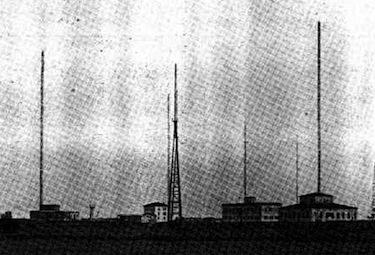The buildings which once proudly housed Guglielmo Marconi’s Telecommunications Station are in a sorry, dilapidated condition despite their historic importance for Italy and the world. The Mayor of Pisa, Marco Filippeschi, has announced, during celebrations for the centenary of Marconi’s Nobel laureateship, that he has written to the State Property Office to request their urgent regrading.
Marconi [1874 – 1937] decided to set up a telcommunications station in the Pisa area in 1903 after realising that its marshy, humid conditions would be ideal for radio transmission. He spoke to King Vittorio Emanuele III about his plans and the King suggested that the scientist use part of the royal estate at Coltano, just south of Pisa. When Marconi saw it, he was convinced that Coltano would be perfect and the Station was set up by 1909, the year he shared the Nobel Prize for Physics with Karl Ferdinand Braun.
In 1910 Marconi sent the first radio message to Africa from the Station, which was officially opened by the King in 1911. On that occasion and in the King’s presence, Marconi successfully transmitted a radio message to Massaua in Eritrea. In 1912 the first SOS in history was sent by Harold Bride, a radio operator on the Titanic who was, in fact, employed by the Marconi International Marine Communication Company. Legend has it that the Marconi Station at Coltano sent the second, urging ships in the vicinity of the Titanic to go to its aid and that it was because of this that 700 passengers survived.
After World War I the Italian Navy chose Coltano as their radiotelegraphic base to communicate with Italy’s colonies. Larger and more well known Italian towns had hoped for the honour but Marconi’s presence at Coltano and its proximity to the Istituto Radiotelegrafico di Livorno were deciding factors for the Navy. By 1919 the Station, with its eight antenna towers, was the most important intercontinental communications centre in Europe.
The Station was sending bulletins and messages to Italian ships in the Far East by 1923 and in 1932 the first short-wave radio signal was sent to an Italian ship in the China Sea from Coltano. In 1939 the Axis Powers used the Station for communications during the invasion of Africa. In 1944 the buildings were bombed by the allies and later Allied / American POW camps were set up on the Coltano estate. The buildings were used by the American military, who continued to develop Signals technology there, from the 1950s and Coltano was the location of the famous Camp Darby. The American military presence at Coltano ended in 2000.
“Italy”, says Professor Luigi Maffei of the University of Pisa, “does not value its treasures”. The Fondazione per l’ambientale italiana has campaigned for many years for the restoration of the Station and hopes that such a project would encompass the building of a museum and laboratory on the site.
Do you think the buildings are worth saving?














